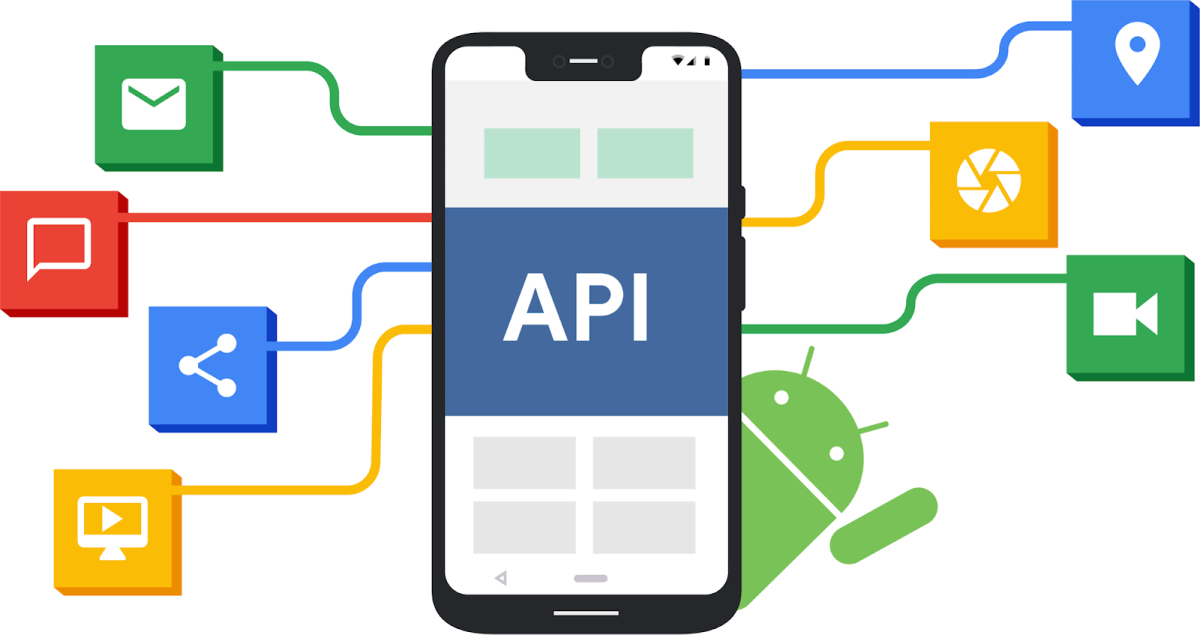What is an API and Advantages of programming interfaces

The abbreviation means API interface programming application and describes a programming interface. The connection is made at the source code level. APIs are used in many applications and are used in the web environment in the form of web APIs.
Using code modules in conjunction with APIs makes programs less error-prone and easier to maintain, especially for people who don’t have much knowledge about the world of programming.
Basic concepts and properties of an API
A programming interface is used to exchange information between an application and individual parts of the program in a standardized way. The transfer of data and commands is structured according to a previously defined syntax. The API allows programming to be modularized and thereby simplified. The individual parts of the program linked through an API fulfill specific functions and are clearly separated from the rest of the application.
Communication between individual program modules is only possible via the precisely specified interface. The API defines how the application module receives the information and data and sends it back. The application programming interface does not deal with the actual flow of the program within the module.
Unlike a binary interface, the connection of the program in the API is done only at the source code level. If a programming interface is provided, this is usually done in conjunction with detailed documentation of the individual functions, the exact syntax, and possible parameters. The hardware components, databases, functions or individual program interfaces and other elements can be accessed through the API, this is one of the reasons why we can see that all the most relevant programs and pages already have said interface.
Differentiation between user and programming interface
The application programming interface can be from a user interface (UI). While the user interface provides the interface between the program logic and the software user, the application programming interface is the equivalent of machine-readable program code.
The user interface receives data from users, forwards it to the application for processing, and returns the results to the user. The application programming interface does not interact with the user, but rather processes the data received from a program module and transmits the results to the module in the best possible way.
Also Read: Electric cars & pollution: facts and Myths
Advantages through the use of programming interfaces
The constant use of programming interfaces offers many advantages. Complex and very large software can be modularized using APIs , thereby simplifying and making it faster and more functional. Individual functions can be outsourced to program modules, resulting in a clean overall structure. Using modular program code in conjunction with APIs makes programs less error prone and easier to maintain.
If individual functions are malfunctioning, only the affected modules and the data passed to the API need to be checked more closely. Another advantage of a well-documented programming interface compared to non-API applications is the ability to outsource programming work. Thanks to the programming interface, the development of individual software subareas can be transferred to an external software company or a freelance developer with little effort.
External providers
They can also develop functions for the system themselves. This increases the attractiveness and flexibility of the overall product and creates clear competitive advantages. Seemingly unchanged APIs also increase the long-term stability of a system.
The actual program code can be changed as needed without affecting modules that have been outsourced through the programming interface. Therefore, it is not necessary to modify other applications. Due to the continuity of the software, costs and labor can be significantly reduced, which in turn allows the software to continue to be improved more and more.
Basic classification of programming interfaces
Programming interfaces can be divided into four different types. These basic type classes are:
- Function-oriented API
- File Oriented API
- Object oriented API
- Protocol Oriented APIs
Whereas function-oriented interfaces primarily use functions and their parameters for communication, file-oriented APIs address individual files and file functions with the help of various file system calls. Object-oriented programming interfaces work with so-called interface pointers and are significantly more flexible than purely function-oriented interfaces. An essential characteristic of protocol-oriented APIs is their independence from a defined operating system or specific hardware.
Commonly used API examples
APIs can be found in many areas of the most varied software applications. Many public web APIs are available in the web environment, with which you can integrate offerings into your own applications. For example, there are APIs for services like:
In the web environment, APIs are often used in online stores and content management systems. Different payment service providers, online marketplaces, store classification systems, or shipping service providers and other services can be connected to the various systems in a standardized way with little effort.
The interfaces authentication and authorization are a special type of web API. APIs like Facebook Connect or the OpenID standard allow users to log into other portals without the need for their own user management. A single user identity can be used for many different portals through these APIs.
Also Read: Earn money to Upload Your Own Android free App on 9Apps




